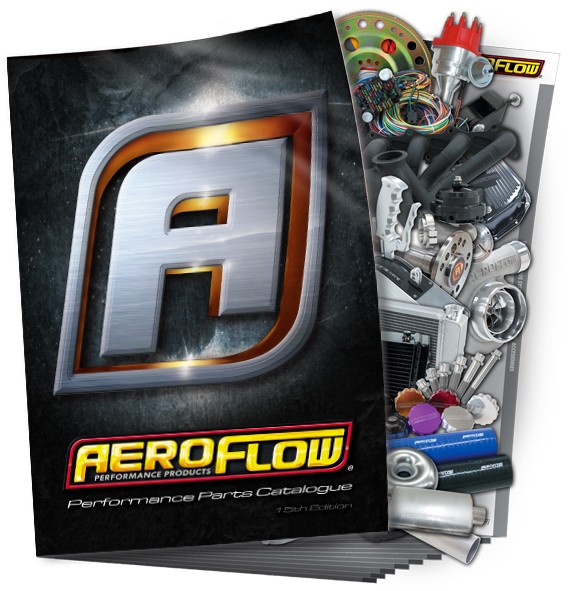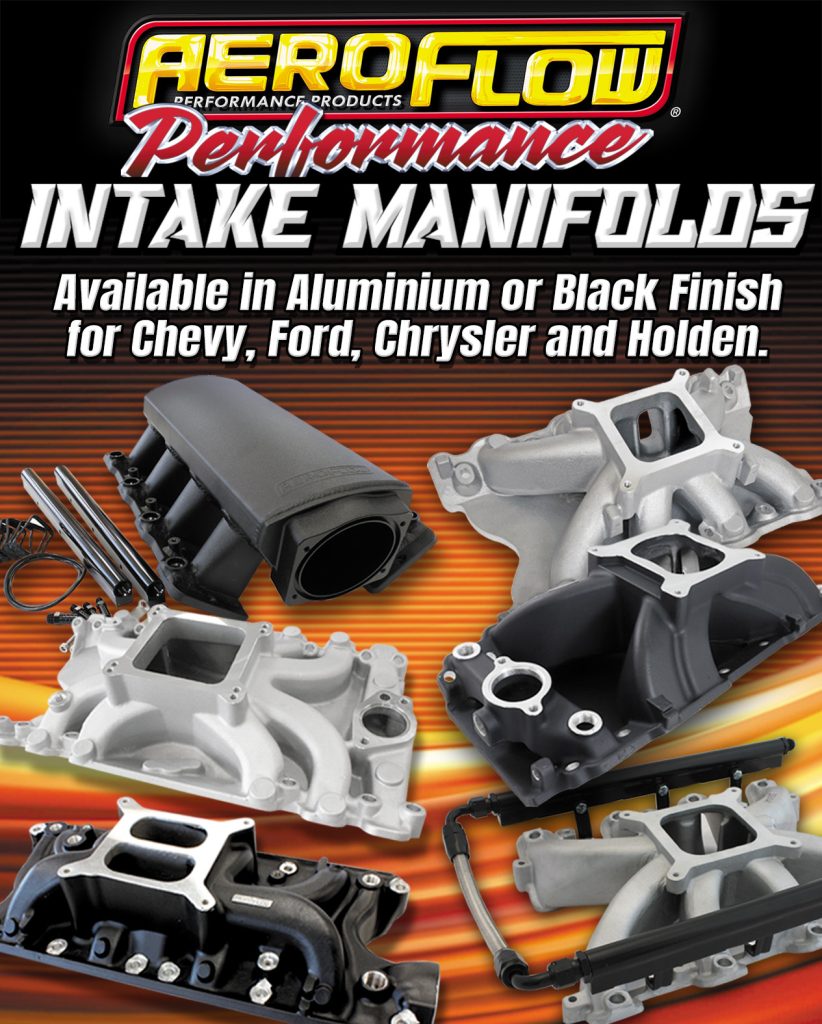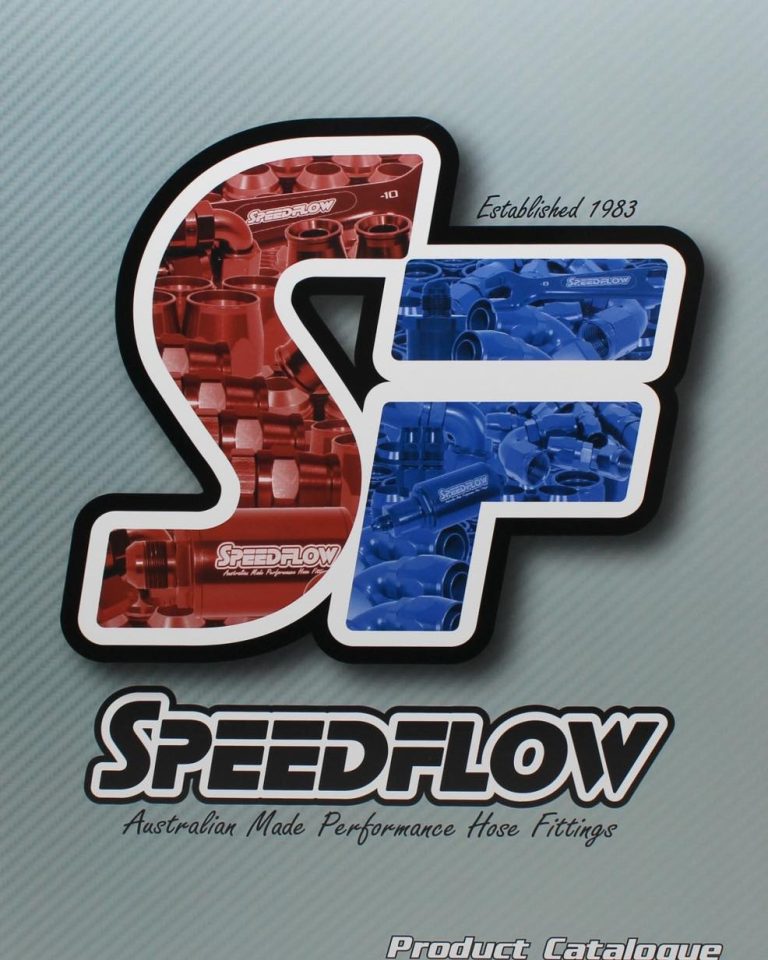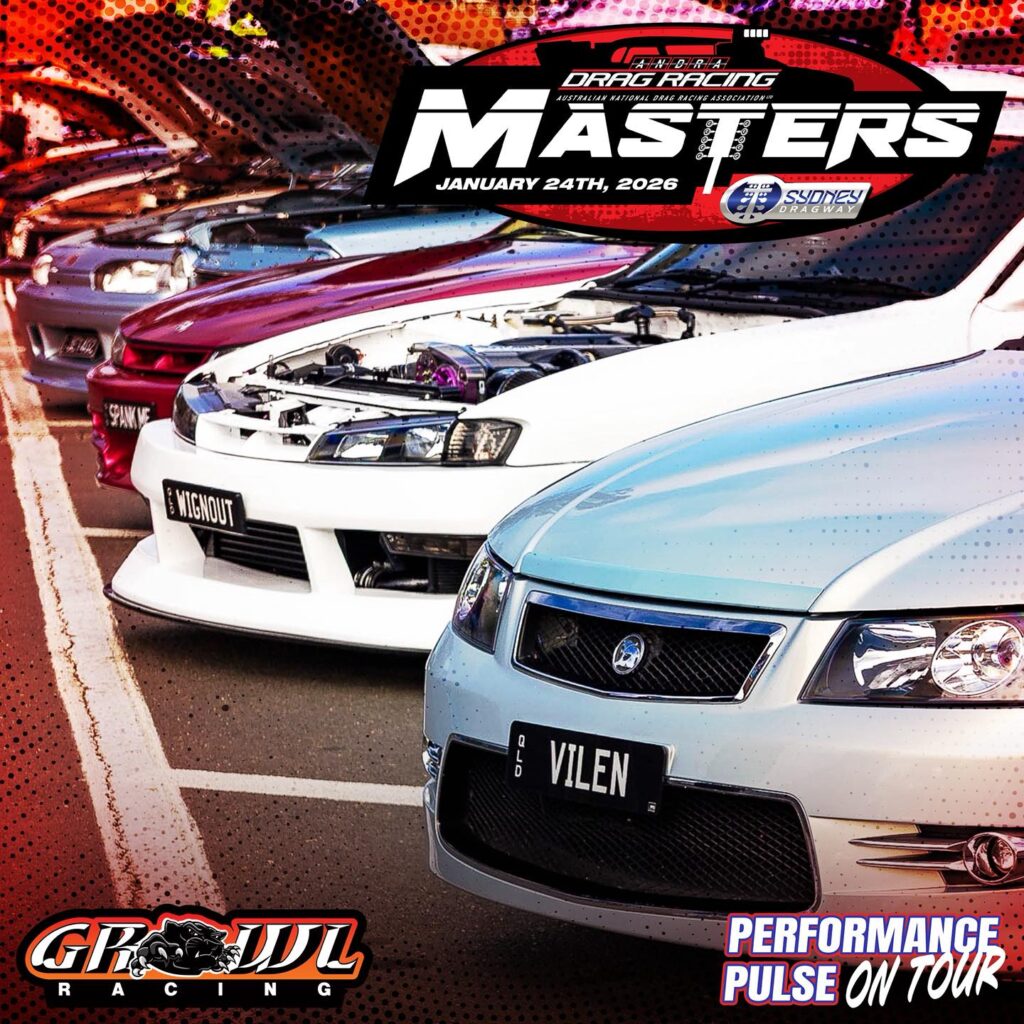
Factory involvement has always been crucial to Pro Stock in the US, but in Australia participation from the corporates lagged behind. That was until Lee Bektash came on to the scene with Mopar, developing a partnership that is now close to a decade old and has ensured Pro Stock remains a three way war between Ford, Chev and Dodge.
Bektash’s drag racing life hasn’t always been so much in the spotlight. His first travels down a drag strip were in a Holden Commodore at Victoria’s Calder Park. As a young man that was what he could afford and what he enjoyed.
“I had a passion for fast street cars from a young age,” he said. “Everyone learns the hard way and we all ended up at Calder Park. It kicked off from there, racing Super Street. I was sucked in by the speed and just wanted to go faster and faster.
“The first car I raced at the track was a Holden Commodore I had from a young age. I ended up buying a half chassis Torana which we ran in Super Sedan, then we built the Calibra for Super Gas with George Haddad.”
Victoria is the home of fixed index racing in Australia and for Bektash it was the next best thing to going Pro Stock racing. Heads up trees and a need for perfection would prove to be an ideal training ground for when he made a move to Group One. In an enviable performance, Bektash went through 26 rounds of racing undefeated.
“We had a lot of success actually. We were probably the only car to be undefeated for a year. Every race we entered we won and we won the championship in the 2001 season. George played a big role in that.”
Going pro
 Australia already had a successful Dodge team in the form of Jon Andriopoulos and Con Sideris, who claimed the ANDRA Pro Stock Championship in 2003 and 2007. With his own burning passion for Mopars, Bektash knew this title-winning outfit was the operation he needed to buy when it came up for sale. The Don Ness-built Dodge Avenger (pictured left) had all the right credentials.
Australia already had a successful Dodge team in the form of Jon Andriopoulos and Con Sideris, who claimed the ANDRA Pro Stock Championship in 2003 and 2007. With his own burning passion for Mopars, Bektash knew this title-winning outfit was the operation he needed to buy when it came up for sale. The Don Ness-built Dodge Avenger (pictured left) had all the right credentials.
“I’ve always been a Pro Stock fan. I started off following Hans van Dyk and Peter Ridgeway, they are my all time heroes. Pro Stock is a driver’s class and that’s all I wanted to do. I don’t think I can drive anything without five gears.
“An opportunity came up where I could purchase a Pro Stock car already running in Pro Stock. We formed the partnership with Chrysler and here we are now, we will be running tenth celebration season.
“They (Andriopoulos and Sideris) had done pretty well, they had won the championship and their last season in the car they won. We were buying a going team. Obviously we took it to the next level from there and chased every round.”
Bektash moved on to a Dodge Stratus which he campaigned for the majority of his racing career so far and then in 2013 shifted to an ex-Allen Johnson Dodge Avenger which he has continued to use until today.
“I reckon I’ve got the best race car in Australia, I don’t think there is any car that has had the development I’ve got,” he said. “The car was designed by Rick Jones and Dodge Motorsport as a one off and it is probably one of the reasons it goes so fast.
“The chassis is a double rail car, you don’t see it much in Pro Stock. It is very rigid. (Allen) always told me the car was the best he had driven and I have to admit he was right.”
Mopar or no car
The above heading is a famous slogan uttered by diehard supporters of the pentastar brand. But it is more literal in Bektash’s case.
Pro Stock cars are expensive. A quality rolling chassis alone commands a premium on the open market, before you add in the cost of your engine program and maintenance. The backing provided by Fiat Chrysler has allowed Bektash to pursue the glory of a national championship. It wasn’t as if he simply wrote a letter to the brand that happened to be on the side of his new Pro Stock acquisition, Bektash is a dyed in the wool fan.
“I’ve always been a Mopar man, but Chryslers were always more expensive. I couldn’t afford to buy the Chargers when I was younger, Commodores were a lot cheaper.”
Taking inspiration from some drag racing legends including Allen Johnson, Scott Geoffrion and Darrell Alderman, Bektash wanted to be the face of Mopar in Australia, the one who could push the brand into the winner’s circle and reach out to its unique fanbase.
“Ten years ago in the drag racing circle, Mopar was not as big as what it should have been (in Australia). US Pro Stock teams had drivers who became big names through Mopar. I said to Mopar ‘I know I can become this.’”
Bektash talks confidently, but he rarely fails to back up his talk with action. The partnership has been one of the strongest corporate relationships in drag racing as the passion on both sides shines through. It hasn’t just been a matter of wrapping the cars in some nice blue ‘Ms’ – Bektash has been an active ambassador associating Mopar with performance.
“The number one thing was to build the brand and I believe we have been successful at doing that and creating a strong following.”
Maintaining the edge

 Being an ambassador is one thing, but ‘win on Sunday, sell on Monday’ still applies.
Being an ambassador is one thing, but ‘win on Sunday, sell on Monday’ still applies.
Bektash has the quickest and fastest Pro Stock car in the nation (6.87/200mph) but such extreme performances have not come without effort.
“Every bit of funding we have had from Chrysler has gone into the car and the set up. We have probably had two or three engines we have been working with. Our spare engine can now run with the top four due to the set up of the car, the crew and the driving, despite having 20 or 30 horsepower less.
“The shock program we are involved in with Penske and Adam Lambert and the set up on these cars is crucial. We believe if we took what we learned into a Top Doorslammer we could run with the heavy hitters straight away. But (Top Doorslammer) is not something I’ve always looked at as a kid and wanted to be a part of.”
 We’ve reported in Drag News Magazine before on the claimed performance advantages of the Mopar combination. But there are also limitations and so while the cylinder heads are more advanced, the blocks are a weak point.
We’ve reported in Drag News Magazine before on the claimed performance advantages of the Mopar combination. But there are also limitations and so while the cylinder heads are more advanced, the blocks are a weak point.
“From the success Dodge Motorsport had in Pro Stock Truck (a now defunct class for small block, naturally aspirated V8s the NHRA used to run), we knew that the cylinder head program with the Hemis and the Dodges was far more advanced than the Chevys, but we had to persevere with this block situation. It has taken a lot of money to get it where it is right now.
“The Tremaniac team was a force to be reckoned with, they were virtually unstoppable and we were the only ones trying. We came close at getting the championship and finished top four every year. We top qualified 12 times and eight of those times we had engine issues, if we didn’t have that I’m sure we might have pinched one or two of those championships.”
Bektash is quick to provide credit to engine builder Bob Book, who has worked to provide horsepower and reliability in equal measure.
“He really took it to another level. We joined with Bob three years ago and since then we haven’t looked back. We’ve had more US help with Tomi Laine who did a great job developing the car and teaching the crew. Paul Drady and Tony Caroscio now have taken control of the team. The team is very experienced and the depth involved in the team is why we are in such a good situation.”
Bektash has built a race shop at one of his family’s properties, so Drady and partner Hayley Turns literally sleep next door to the car.
“Paul and Hayley now live and breathe the car. That is probably one of the best things I’ve seen. I’ve given (Paul and Tony) an opportunity to tune the car and given them a chance no one else would have given them. In their first season they have won a championship and it is a credit to them.”
The 400 Thunder Pro Stock Championship recently went Bektash’s way although it nearly all went wrong at the final hurdle.
“We had a terrible Winternationals with ignition problems. It was a nightmare of a meeting. We have never had one like that but I suppose it happens, we just couldn’t get on top of it.
“The first qualifier we missed when the car would start, we came back into the pits and thought we had solved the problem. I started it for the second qualifier and made a run and then we couldn’t start it again in the pits. We came out to run Emilio, it started in the pits and then couldn’t start it for the run. It was probably the worst event I’ve ever had. I’ve blown engines up and been happier because at least we made semi finals or top qualified; to go out the way we did was disappointing but it just makes us hungrier. I’ve probably got the three most passionate guys involved in this team: Bob Book, Tony Caroscio and Paul Drady. Those three keep me enthusiastic and hungry for some success.”
Where to from here?
 When Bektash ran his 6.87 pass on November 2, 2014, it was something of a double-edged sword. The quarter mile clocking was an amazing achievement but there was a side effect on the rest of the field. Cars began to return to sheds after several years of 20-plus fields (would you believe 28 teams entered the 2012 Winternationals) as the bar was continually raised.
When Bektash ran his 6.87 pass on November 2, 2014, it was something of a double-edged sword. The quarter mile clocking was an amazing achievement but there was a side effect on the rest of the field. Cars began to return to sheds after several years of 20-plus fields (would you believe 28 teams entered the 2012 Winternationals) as the bar was continually raised.
Bektash acknowledges Pro Stock racing is hard, with a return for effort that is questioned by even the most hardcore of teams. But he is hopeful the bracket will find a sustainable medium between its glory days of the early 2010s and low car counts.
“Pro Stock here will probably bounce back. I think we will have an average of 12-13 cars per event. As a bracket we are looking at the top eight cars running six second passes. We know the crowd support us with the tight racing and the rivalry.
“I’m going to be 47 this year and I don’t know if I still have the drive I had nine years ago. Now I feel like I enjoy rewarding people with the car’s performance. The amount of feedback we received from people in the crowd on our 6.87 was awesome. It would be nice to do that in Melbourne at our home track.”
American Pro Stock, which runs a 500ci formula, recently mandated electronic fuel injection. Though it is just the first season of the rule change, many teams have dropped out and one team, namely Ken Black’s Summit Racing, are dominating. Bektash isn’t opposed to EFI in Pro Stock but he would like to say it as optional rather than mandated.
“I believe they could allow them to run. I think it is a good idea. If somebody wanted to run a fuel injected deal we should be able to welcome them in and not deprive them of running. I would allow both. I can’t see how the fuel injection deal can make more power than what we have got. If we have to run the same injection as the US cars run we will not make as much power as we do now with the two BRE carbs.”
More exciting to Bektash is the potential of a new series to compete in, albeit one that would require a massive commitment. The National Muscle Car Association, together with Bektash’s engine builder Bob Book, has begun a class for 400ci Pro Stock cars in the USA. Bektash would love to see an international competition.
“I’m hoping that kicks off, a lot of other (US Pro Stock) teams will probably drop back and run the small block carb version we do in Australia. I think the future of the bracket would be an Australia vs US deal. If we could run it a couple of times here and run there a couple of times, that is something I would like to do. We have always been looked at as the junior drag racers but I think in this class we can really show them we are probably better than what they are based on experience.
“The pinnacle of drag racing is the USA, to race there and rub shoulders with the legends. Shane Tucker has been lucky enough to do it. If we have to run our own deal there we would be a lot more competitive running an Aussie PS deal than running their rules.”
The scenario is not clear for Bektash’s own future. To run at a championship level requires the backing of a good partner and Mopar has provided that for a decade. The team’s contract finishes in December 2017. Bektash said the company has been happy with what he has done so far, so the ball is in their court as far as a renewal goes.
“I would like to win the championship again one more time. We have worked hard, we’ve had a lot of engine block problems from day one and Bob Book looks like he has solved that problem after nine years. The record setting engine will come back and the aim is to run 6.8s at 200 at every meeting we attend.”
This article originally appeared in Drag News Magazine Issue 20. To subscribe to Drag News Magazine and support more articles like this on Australian drag racing, click here.















